As required in the “Directive on the Assessment and Management of Environmental Noise”, strategic noise maps graphically represent the noise situation in the following isophone classes:
Strategic Noise Maps 2017
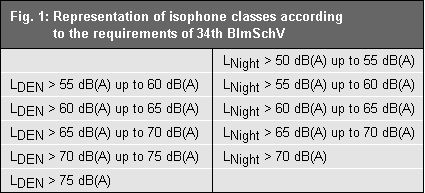
Fig. 1: Representation of isophone classes according to the requirements of the "Directive on the Assessment and Management of Environmental Noise"
Image: Umweltatlas Berlin

Table 4: Number of people impacted in their homes due to road traffic noise on all streets assessed (based on the noise index LDEN)
Image: Umweltatlas Berlin

Table 5: Number of people impacted in their homes due to road traffic noise on all streets assessed (based on the noise index LNight)
Image: Umweltatlas Berlin
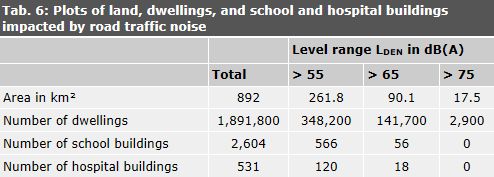
Table 6: Plots of land, dwellings, and school and hospital buildings impacted by road traffic noise on all streets assessed
Image: Umweltatlas Berlin

Table 7: Number of people impacted in their homes due to streetcar and subway noise (based on the noise index LDEN)
Image: Umweltatlas Berlin

Table 8: Number of people impacted in their homes due to streetcar and subway noise (based on the noise index LNight)
Image: Umweltatlas Berlin
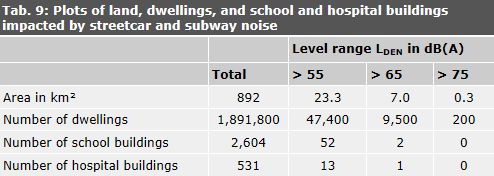
Table 9: Plots of land, dwellings, and school and hospital buildings impacted by streetcar and subway noise
Image: Umweltatlas Berlin

Table 10: Number of people impacted in their homes due to industrial and commercial noise (based on the noise index LDEN)
Image: Umweltatlas Berlin

Table 11: Number of people impacted in their homes due to industrial and commercial noise (based on the noise index LNight)
Image: Umweltatlas Berlin
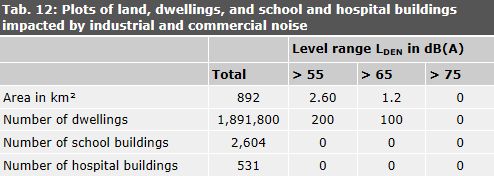
Table 12: Plots of land, dwellings, and school and hospital buildings impacted by industrial and commercial noise
Image: Umweltatlas Berlin

Table 13: Number of people impacted in their homes due to aircraft noise from Berlin-Tegel Airport (2015) (based on the noise index LDEN).
Image: Umweltatlas Berlin

Table 14: Number of people impacted in their homes due to aircraft noise from Berlin-Tegel Airport (2015) (based on the noise index LNight).
Image: Umweltatlas Berlin
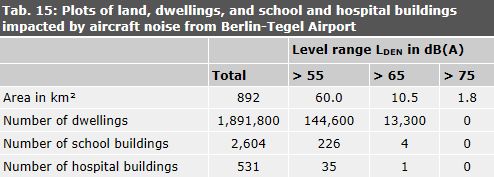
Table 15: Plots of land, dwellings, and school and hospital buildings impacted by aircraft noise from Berlin-Tegel Airport
Image: Umweltatlas Berlin

Table 16: Number of people in Berlin impacted in their homes due to aircraft noise from Schönefeld Airport (2010) (based on the noise index LDEN)
Image: Umweltatlas Berlin

Table 17: Number of people in Berlin impacted in their homes due to aircraft noise from Schönefeld Airport (2010) (based on the noise index LNight)
Image: Umweltatlas Berlin
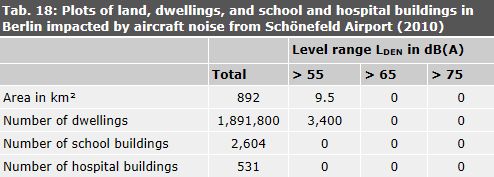
Table 18: Plots of land, dwellings, and school and hospital buildings in Berlin impacted by aircraft noise from Schönefeld Airport (2010)
Image: Umweltatlas Berlin

Table 19: Total number of people in Berlin impacted in their homes due to aircraft noise from Berlin-Tegel (2015) and Schönefeld Airports (2010) (based on the noise index LDEN)
Image: Umweltatlas Berlin

Table 20: Total number of people in Berlin impacted in their homes due to aircraft noise from Berlin-Tegel (2015) and Schönefeld Airports (2010) (based on the noise index LNight)
Image: Umweltatlas Berlin
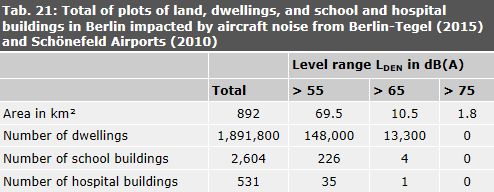
Tab. 21: Total of plots of land, dwellings, and school and hospital buildings in Berlin impacted by aircraft noise from Berlin-Tegel (2015) and Schönefeld Airports (2010)
Image: Umweltatlas Berlin
